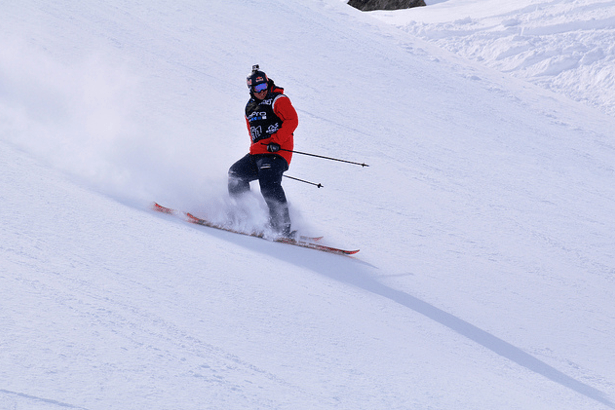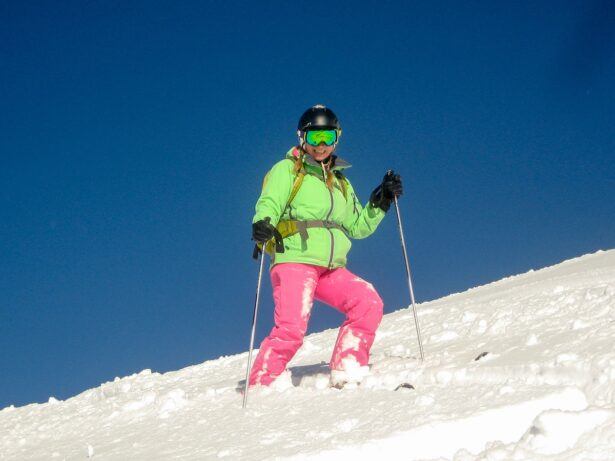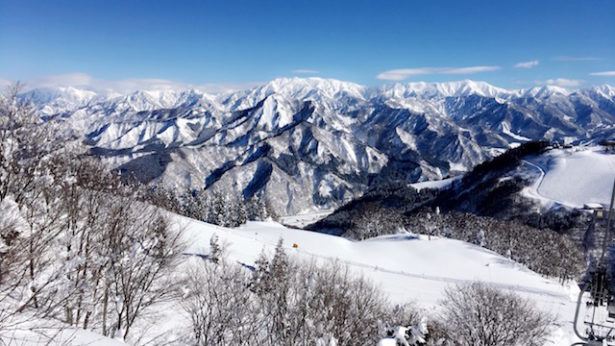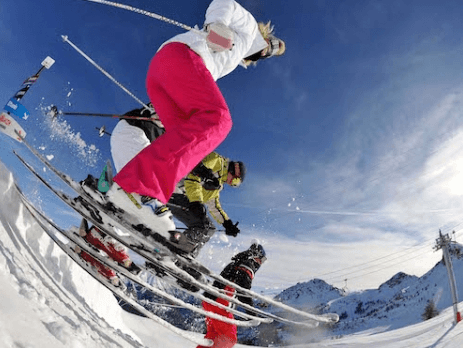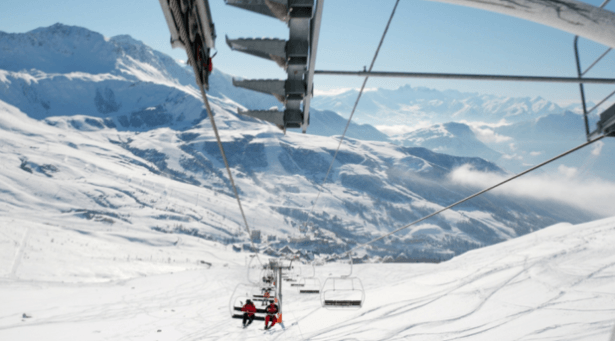You’re staring at flight prices, comparing resort websites, and scrolling through endless snow reports trying to decide where to spend your precious winter holiday budget. Should you book Australia with its convenient access and modern resorts? Or commit to New Zealand’s legendary terrain and natural snowfall?
The decision is tough. Both countries deliver very different experiences. Choose wrong, and you’ve wasted thousands of dollars and your limited vacation time on a disappointing ski trip. Yet marketing from both destinations makes the choice even harder… everyone claims to have the best snow, the best terrain, and the best overall experience.
This guide cuts through the marketing hype. From snow quality and resort options to costs and accessibility, we’ll help you make your decision based on what actually matters to you.
Snow Quality and Season Length
Australia’s Snow Profile
Australia might not seem like a ski destination at first glance. But its alpine regions get enough snow to support a decent ski industry. The Australian Alps in New South Wales and Victoria typically receive between 1-2 meters (40-80 inches) of natural snowfall each year.
The Australian ski season runs from early June through late September. For the best conditions, aim for July and August. Still, Australian snow can be hit or miss. Rain and warm spells sometimes ruin the powder just when you’ve planned your perfect trip.
To combat this unpredictability, Australian resorts have invested heavily in snowmaking technology. Perisher, Australia’s largest resort, boasts one of the Southern Hemisphere’s biggest snowmaking systems. It covers over 53 hectares of terrain. This tech extends the season and keeps slopes skiable when nature doesn’t cooperate.
Climate change is making things harder. Rising temperatures are shortening an already brief season. Studies predict Australian ski resorts might lose up to 60% of their natural snow coverage by 2050. Not great!
New Zealand’s Snow Profile
New Zealand lucked out with its geography for skiing. Higher mountains and proximity to Antarctic weather systems deliver much better natural snowfall. Major New Zealand ski areas receive between 2-4 meters (80-160 inches) of snow annually. Some fields occasionally get dumped with much more.
The New Zealand ski season typically stretches from early June through mid-October. Some high-altitude areas operate into November. The sweet spot? Mid-July through August. But early-season conditions can be excellent after big winter storms.
New Zealand resorts have snowmaking equipment. They just don’t need to rely on it nearly as much as their Australian counterparts. The Southern Alps benefit from unique weather patterns that deliver substantial natural snowfall throughout winter.
What’s really cool about New Zealand is its varied weather patterns. The Canterbury region (home to Mt Hutt) often experiences completely different weather than Queenstown/Wanaka. When conditions are poor in one area, they might be perfect in another. Options.
For serious skiers, snow quality makes or breaks a trip. That’s why New Zealand’s more reliable natural snowfall often wins out. That said, Australia’s investment in snowmaking means you’ll always have something to ski on, even during natural snow droughts. Your choice depends on whether you want that fresh powder feeling or just guaranteed ski time, regardless of conditions.
Resort Comparison
Australian Ski Resorts
Australia has several notable ski areas, mainly in New South Wales and Victoria:
Perisher: Australia’s biggest resort. Four connected areas (Perisher Valley, Smiggin Holes, Guthega, and Blue Cow). 3,076 acres of skiable terrain. 47 lifts. 355-meter vertical drop. Perfect for intermediate skiers with tons of groomed runs and several terrain parks for freestyle enthusiasts.
Thredbo: Often considered Australia’s premier resort. Australia’s longest runs and greatest vertical drop (672 meters). 14 lifts serving varied terrain from gentle beginner slopes to challenging steeps like the infamous Funnel Web. Most complete skiing experience in Australia. European-style village is a huge plus for apres-ski activities.
Falls Creek: Victoria’s largest resort. Ski-in/ski-out accommodation across 450 hectares. 14 lifts. With 90 marked runs, Falls Creek is intermediate heaven. Its renowned cross-country trails (65km worth) attract Nordic skiing fans too.
Mt Buller: Located closest to Melbourne (just a 3-hour drive). 300 hectares of skiable terrain. 22 lifts. 80 runs split evenly between beginner, intermediate, and advanced difficulty levels. A solid all-rounder.
New Zealand Ski Resorts
New Zealand’s ski resorts come in two types: commercial resorts and club fields. Commercial resorts offer amenities similar to international standards. Club fields provide a more raw, authentic experience.
Queenstown/Wanaka Area Resorts:
Coronet Peak: Just 20 minutes from Queenstown. 280 hectares of varied terrain. Night skiing. Extensive snowmaking. Known for groomed intermediate runs and jaw-dropping views of Lake Wakatipu.
The Remarkables: Family-friendly. High-alpine bowls. Three terrain parks. Dedicated beginner areas. 385 hectares including some of New Zealand’s best chutes and off-piste options for advanced skiers.
Cardrona: Sitting between Queenstown and Wanaka. New Zealand’s most reliable snow conditions. Extensive terrain parks. Consistent grooming across 400 hectares.
Treble Cone: 550 hectares of skiable terrain. 700 meters of vertical drop. South Island’s largest ski area. Famous for challenging terrain, off-piste bowls, and stunning views of Lake Wanaka.
Mt Hutt: High-altitude resort near Christchurch. Some of New Zealand’s most reliable snowfall. 365 hectares of skiable terrain. Known for long seasons and wide, open trails suitable for all ability levels.
Club Fields: New Zealand’s club fields include Craigieburn, Broken River, and Temple Basin, offer something entirely different. Member-operated. Rope tows instead of chair lifts. Minimal grooming. Basic facilities. But they provide access to exceptional backcountry terrain and an authentic ski culture that attracts hardcore enthusiasts.
Your choice of resort dramatically shapes your skiing experience. Think about what matters most to you. Value modern amenities, fast lifts, and perfectly groomed runs? Australian resorts might be your jam. After varied terrain, natural snow, and a more rugged experience? New Zealand’s diverse offerings will probably appeal more.
Cost Analysis
Australian Skiing Costs
Let’s not sugarcoat it. Skiing in Australia ranks among the most expensive ski experiences globally. Here’s what you’re looking at (in Australian dollars):
- Lift tickets: A$160-$180 per day for adults during peak season (discounts available for multi-day passes)
- Equipment rental: A$70-$90 per day for a basic ski package
- On-mountain accommodation: A$300-$800+ per night during peak season
- Off-mountain accommodation: A$150-$300 per night in nearby towns
- Food and beverage: A$25-$35 for a basic lunch at on-mountain restaurants
- Lessons: A$90-$150 for a group lesson, A$180-$250 for private lessons
Additional costs include:
- Mandatory resort entry fees: A$50 per vehicle at Victorian resorts
- Parking: A$40-$55 per day at most resorts (if not staying on mountain)
- Chain hire: A$30-$45 per day (required for non-4WD vehicles during snow conditions)
For a family of four, a week-long ski vacation in Australia can easily exceed A$10,000 when accounting for accommodation, lift tickets, rentals, and meals. Ouch.
New Zealand Skiing Costs
New Zealand offers a slightly more budget-friendly skiing experience. The favorable exchange rate for international visitors helps too. Costs (in New Zealand dollars):
- Lift tickets: NZ$120-$160 per day for adults (significantly cheaper multi-day and season passes available)
- Equipment rental: NZ$60-$80 per day for ski hire in Queenstown.
- Queenstown/Wanaka accommodation: NZ$200-$700+ per night during peak season
- Other accommodation options: NZ$100-$250 per night in smaller towns
- Food and beverage: NZ$20-$30 for a basic on-mountain lunch
- Lessons: NZ$80-$130 for group lessons, NZ$150-$220 for private lessons
New Zealand’s club fields are where the real savings happen. Day passes typically range from NZ$70-$95. Though these fields provide fewer amenities and more challenging access.
Your budget considerations often dictate how long you can stay and how much you’ll enjoy your trip. Australia’s higher costs might limit the number of ski days for budget-conscious travellers. New Zealand’s relatively lower prices (and the bargain option of club fields) provide more flexibility for extended stays. This matters especially for families or groups trying to maximise snow time without breaking the bank. In fact, there are some great options to get the most from your trip, for example, Snopro can deliver your ski hire along with lift passes for great value and save the struggle of lugging ski kit around.
Accessibility and Travel Logistics
Getting to Australian Ski Fields
Australian ski resorts have the advantage of relative proximity to major population centres:
- NSW resorts: Perisher and Thredbo sit approximately 5.5 hours drive from Sydney and 2.5 hours from Canberra
- Victorian resorts: Mt Buller is 3 hours from Melbourne, while Falls Creek and Mt Hotham are 4.5-5 hours away
Most Aussies drive to the resorts. Shuttle services operate from major cities and regional airports too. During peak times and weekends, traffic gets nasty. Those winding mountain roads can turn a 3-hour drive into 5+.
Winter driving conditions require preparation. Vehicles must carry snow chains unless they’re 4WD. Chain fitting stations operate at mandatory points when snow is present. Chain hire typically costs A$30-$45 per day.
Parking at resorts can be a headache, especially on weekends. Day parking costs A$40-$55 at most resorts. Overnight parking may be restricted or unavailable without accommodation bookings.
Oversnow transport is required at some resorts (notably Perisher’s outlying areas) where roads are not cleared. This adds complexity and cost.
Getting to New Zealand Ski Fields
For international visitors, accessing New Zealand ski fields takes more planning:
- International flights to Christchurch or Queenstown (the latter offering direct access to Queenstown/Wanaka resorts)
- Domestic connections available to smaller airports near ski regions
- Driving times: 1.5 hours from Queenstown to most local resorts; 2 hours from Christchurch to Mt Hutt
New Zealand mountain roads can be tricky. Especially for those not used to winter driving or driving on the left. Most major resorts have regular shuttle services from nearby towns. This eliminates the need for mountain driving.
Rental cars must be equipped with snow chains during winter when travelling to ski areas. These are typically available for an additional fee from rental companies. Some rental car contracts prohibit driving on certain mountain roads.
New Zealand’s club fields present additional access challenges. Often requiring 4WD vehicles and chains to navigate unpaved access roads.
Travel time and logistics can make or break your vacation experience. Especially on shorter trips. Australia offers easier access for Australian residents. New Zealand might be more convenient for international visitors flying directly to Queenstown. If you’re travelling with kids or have limited time, these considerations become even more important. There’s nothing worse than spending half your vacation stuck in transit or dealing with complicated access issues.
Off-Mountain Activities and Atmosphere
Australian Apres-Ski Experience
Australian ski resorts generally feature compact, purpose-built villages offering various amenities:
- Village facilities: Most major resorts provide restaurants, bars, and retail shops within walking distance of accommodations
- Nightlife: Thredbo offers the most developed nightlife scene. Multiple bars and occasional live music. Other resorts have more limited evening entertainment
- Non-skiing activities: Snow tubing. Snowshoeing. Spa facilities. Some resorts offer snowmobile tours and cross-country skiing trails
- Family amenities: Dedicated children’s snow play areas. Childcare services. Family-friendly dining options
The après-ski scene in Australia tends to be more family-oriented and chilled compared to European resorts. Earlier closing times. Fewer late-night venues. On-mountain accommodation options range from luxury apartments to basic lodges. Most provide ski-in/ski-out convenience at premium prices.
New Zealand Après-Ski Experience
New Zealand offers a more diverse off-mountain experience. Most visitors stay in towns rather than at the resorts themselves:
- Queenstown: Internationally renowned as the “Adventure Capital of the World.” Exceptional dining. Vibrant nightlife. Countless activities including bungee jumping, jet boating, and scenic flights
- Wanaka: A more relaxed alternative to Queenstown. Beautiful lakeside scenery. Quality restaurants. Laid-back atmosphere
- Methven/Christchurch: Serving Mt Hutt skiers. More authentic Kiwi experience with local pubs and restaurants
- Cultural experiences: Opportunities to engage with Maori culture, particularly around Ruapehu in the North Island
- Scenic attractions: World-famous landscapes including Milford Sound, Lake Tekapo, and numerous Lord of the Rings filming locations
New Zealand’s varied accommodation options range from luxury lodges and hotels to budget-friendly hostels and vacation rentals. The separation between ski fields and towns means après-ski typically happens in town centres rather than at mountain bases.
The breadth of adventure tourism options in New Zealand is unparalleled. This makes it an exceptional choice for mixed groups, where not everyone wants to ski every day.
A complete ski vacation extends beyond the slopes. Especially for families or groups with mixed interests. Australia’s on-mountain villages offer convenience and a classic ski resort feel. New Zealand’s vibrant towns provide more diverse experiences and extensive adventure tourism options. This becomes particularly important on longer trips where you’ll want variety beyond skiing. Or if you’re travelling with non-skiers who need their own entertainment options.
So which is better for skiing NZ or AUS?
When to Choose Australia
Ideal for:
- Families with young children: Australian resorts offer comprehensive amenities, excellent ski schools, and dedicated beginner areas. Perfect for introducing kids to skiing
- Beginners and intermediates: Well-groomed runs, modern lift systems, and extensive learning areas create an ideal environment for skill development
- Short-trip skiers: The proximity to major cities makes Australian resorts feasible for weekend trips or quick getaways
- Amenity-focused travellers: Those prioritizing on-mountain accommodation, modern facilities, and convenient access to restaurants and shops
Best time to visit: Mid-July to late August provides the most reliable snow conditions. Early September often offers a good balance of decent snow coverage and smaller crowds.
Top resort recommendations:
- Best for families: Falls Creek offers ski-in/ski-out accommodation and a pedestrian-friendly village
- Best for beginners: Mt Buller’s extensive beginner areas and comprehensive ski school
- Best for intermediates: Perisher’s vast network of interconnected runs
- Best all-rounder: Thredbo’s combination of terrain variety, vertical drop, and village atmosphere
When to Choose New Zealand
Ideal for:
- Advanced skiers and snowboarders: New Zealand’s varied terrain, steeper pitches, and off-piste options provide greater challenges
- Powder enthusiasts: Better natural snowfall and less crowded slopes mean more opportunities for fresh tracks
- Adventure seekers: The combination of quality skiing and world-class adventure tourism creates an unbeatable mix
- Budget-conscious travelers: More affordable lift tickets, favorable exchange rates, and a wider range of accommodation options
- Backcountry enthusiasts: New Zealand’s club fields and accessible sidecountry terrain offer exceptional opportunities for experienced skiers
Best time to visit: Late July through August offers peak conditions across most resorts. September often brings spring snow and fewer crowds.
Top resort recommendations:
- Best for powder hunters: Treble Cone receives some of New Zealand’s best snow quality
- Best for park riders: Cardrona’s world-class terrain parks host international competitions
- Best for families: The Remarkables offers excellent beginner facilities and reliable conditions
- Best for experts: Craigieburn and other club fields provide challenging terrain with minimal crowds
- Best all-rounder: Combining Coronet Peak and The Remarkables (on the same lift ticket) provides incredible variety near Queenstown
Different destinations serve different types of ski vacationers. This is why matching your personal preferences to the right country matters so much. Your skiing ability, terrain preferences, budget, and appetite for off-mountain activities should guide your decision between Australia and New Zealand. A family with young children seeking convenience and excellent ski schools might have a fantastic time in Australia. Advanced skiers craving varied terrain and powder might be disappointed with the same choice.

